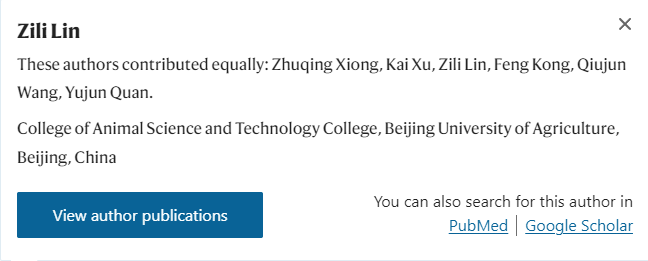On June 13, the international famous scientific journal Nature Cell Biology (IF:29) published a research paper entitled “Ultrasensitive Ribo-seq reveals translational landscapes during mammalian oocyte-to-embryo transition and pre-implantation development”. Lin Zili, Associate Professor of the College of Animal Science and Technology at Beijing University of Agriculture is the co-first author.


Abstract: In mammals, translational control plays critical roles during oocyte-to-embryo transition (OET) when transcription ceases. However, the underlying regulatory mechanisms remain challenging to study. Here, using low-input Ribo-seq (Ribo-lite), we investigated translational landscapes during OET using 30–150 mouse oocytes or embryos per stage. Ribo-lite can also accommodate single oocytes. Combining PAIso-seq to interrogate poly(A) tail lengths, we found a global switch of translatome that closely parallels changes of poly(A) tails upon meiotic resumption. Translation activation correlates with polyadenylation and is supported by polyadenylation signal proximal cytoplasmic polyadenylation elements (papCPEs) in 3′ untranslated regions. By contrast, translation repression parallels global de-adenylation. The latter includes transcripts containing no CPEs or non-papCPEs, which encode many transcription regulators that are preferentially re-activated before zygotic genome activation. CCR4-NOT, the major de-adenylation complex, and its key adaptor protein BTG4 regulate translation downregulation often independent of RNA decay. BTG4 is not essential for global de-adenylation but is required for selective gene de-adenylation and production of very short-tailed transcripts. In sum, our data reveal intimate interplays among translation, RNA stability and poly(A) tail length regulation underlying mammalian OET.

Original Link:https://www.nature.com/articles/s41556-022-00928-6
